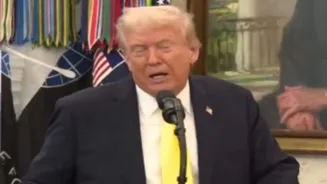ROI Under Scrutiny
Universities in the US are currently facing increasing demands to prove their return on investment (ROI) to prospective students. This pressure stems from
a growing skepticism regarding the benefits of higher education, fueled by escalating tuition fees and a fluctuating job market. Students are becoming more cost-conscious, leading them to question whether the investment in a college education truly yields the financial and career advantages it once promised. This has led to institutions reevaluating their approaches, seeking ways to justify their value in a competitive environment.
Testing and Performance
The role of standardized tests, specifically the SAT and ACT, in predicting student success is under renewed consideration. Some institutions have traditionally emphasized these scores as indicators of academic potential. Research from Princeton suggests that such tests can indeed correlate with student performance, and so, the scores continue to be a considerable factor. However, the exact weight given to these tests is often debated, with some arguing that they do not fully represent a student's broader capabilities or potential for success.
Tuition and Strategies
To address concerns about affordability, and to better compete for students, several universities have started rethinking their strategies for managing tuition costs and attracting international students. These adjustments might include tuition discounts, scholarships, or the streamlining of academic programs to reduce costs. Additionally, universities are exploring how to enhance international student enrollment, as these students often pay higher tuition fees. These initiatives aim to make education more accessible and to prove their financial viability.
Job Market Dynamics
The changing dynamics of the job market have also led students to question the value of college. The emergence of new industries, automation, and evolving skills requirements have raised doubts about whether a traditional degree prepares graduates for the demands of the modern workforce. This has encouraged universities to reconsider their curriculum, offering more practical skills-based training, and forming alliances with industries to provide students with more opportunities for real-world experience. These efforts seek to guarantee students are equipped with skills directly related to job market requirements.
Proving Their Worth
US universities are now tasked with the challenging job of proving their ROI. This involves providing clear evidence that their programs result in positive outcomes such as higher earning potential, career advancement, and personal growth. They are promoting the success stories of their alumni, highlighting research and innovation, and improving student support services. The ultimate goal is to convince prospective students, as well as their families, that the investment in a college education will ultimately yield a positive return.













